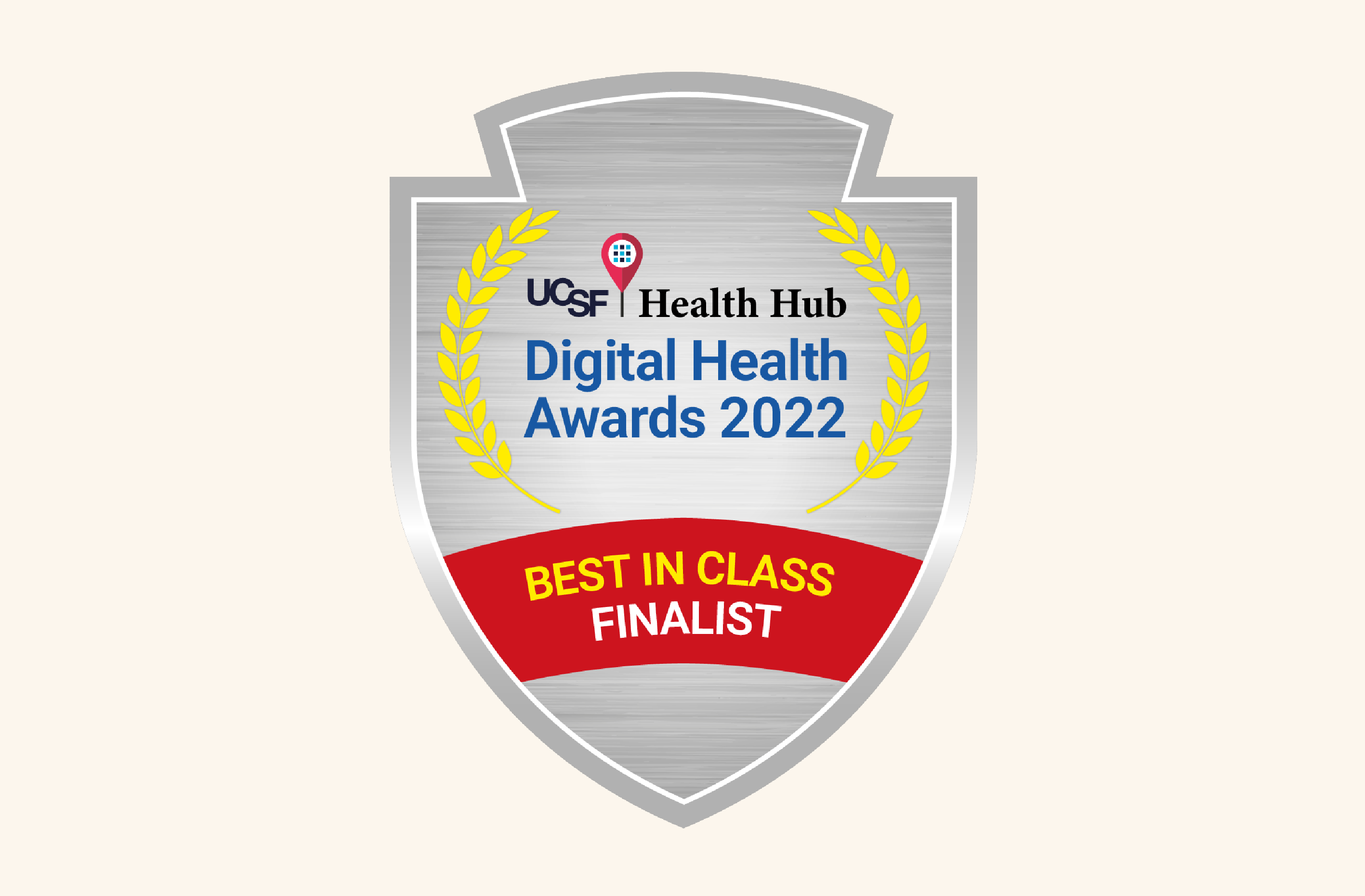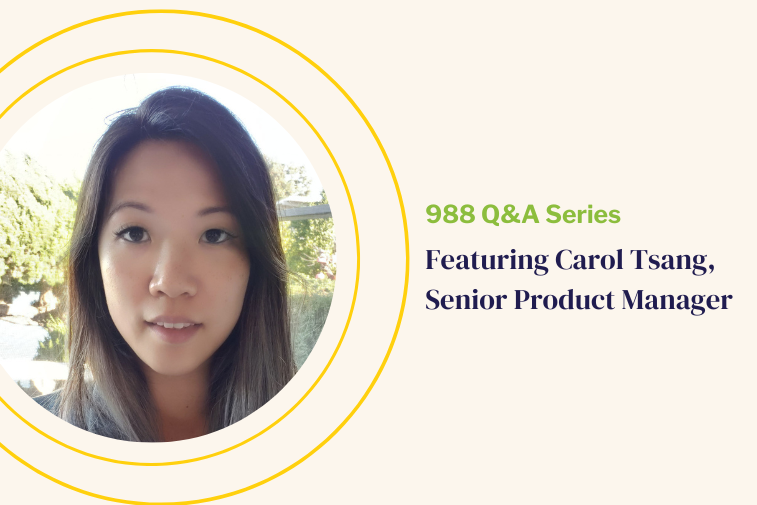As we near the two-month anniversary of the 988 Suicide and Crisis Lifeline launch, it’s becoming increasingly apparent that state infrastructure readiness is a marathon, not a sprint. This means that no two states or geographies will prepare for the compliance with the behavioral health initiative on the same exact timeline or in the same exact manner. To address the infrastructure elements required to address the 988 Suicide and Crisis Lifeline most effectively, we sat down with Bamboo Health Senior Product Manager Carol Tsang to discuss the purpose-built tools and technologies that are available today to help states support their crisis management infrastructures.
Let’s start off by talking a little bit about your position at Bamboo Health and your journey to your current role.
I’ve been at Bamboo Health for about a year, but I’ve been building innovative tools and products to solve complex problems in a range of industries for about 15 years. My experience spans everything from finance to HR; the latter being a market where I’ve spent the most time. It’s in these types of product development positions where you are really afforded an opportunity to see the importance of what you are creating up front. This especially rings true in healthcare. The healthcare industry provides the opportunity to impact and change the lives of so many, which is the most exciting part of my work at Bamboo Health.
It’s been about two months since the 988 launch, and in terms of call volume, people are really beginning to utilize the offering to connect to behavioral health resources during their time in need. But at the state level, there is also the reality that not every geography has the same or is afforded the same resources to help support the demand right off the bat. Some are obviously a lot further ahead than others. What type of infrastructure or interoperability challenges do you feel some states might face at this stage of the roll-out?
To your point, different states are at various stages of maturity in terms of their crisis program preparedness. There are states who have never implemented statewide crisis management until now, and there are states who organically started the process by deploying crisis management tools even before 988 undertaking became a reality.
Because of these various degrees of maturity around the initiative, every state is depending on different tools and services to support their 988 efforts. These uniformity variations are often further exacerbated within each state, where organizations and agencies vary based upon region.
As states continue to move forward with their 988 rollouts, this means that the ability to consolidate and share patient information between these different technology platforms is going to be one of the biggest problems that we’ll continue to see. To effectively address this challenge, we will need greater interoperability and real-time care coordination between crisis management stakeholders to help individuals access expedited behavioral health crisis assessment and treatment.
Is there anything that you feel like all 50 states pretty much had covered in terms of preparedness?
At this stage, most states have an operator in place at crisis call centers to pick up the phone when the 988 call comes in. This is a promising first step, as a call center representative who’s available to talk with someone facing a behavioral health challenge is the key to success. In fact, it’s estimated that 75-80% of incoming calls can be deescalated by call center representatives.
For the rest of the incoming calls, however, operators should have access to additional resources such as the ability to dispatch mobile crisis teams and ensure callers get connected to the proper care when the need it most. Call center representatives should also be able to easily refer callers to inpatient and outpatient treatment facilities to get them the necessary care. Unfortunately, this back-end support varies greatly depending on each state’s crisis management infrastructure.
We’ve talked a lot about the behavioral health crisis at hand and infrastructure readiness at the state level. Let’s chat about Bamboo Health and the technology resources your team has purpose-built to support behavioral health initiatives.
At the core of our behavioral health IT portfolio is OpenBeds®, a solution which creates trusted, coordinated care treatment networks that can essentially act as a doorway into the referral system. To date, OpenBeds is in 14 states, and that number is growing. Bamboo Health’s footprint overall is large, and we really are the only healthcare organization offering a product of this caliber.
We also recently announced the launch of our Crisis Management System, which is built on OpenBeds and supports these crisis call centers at the regional level. This is accomplished by coordinating surges in 988 call volume when needed and expediting access to definitive assessment and treatment for those in crisis. It allows crisis call center staff to perform digital intake and assessment, as well as dispatch mobile crisis units, when necessary, to the individual in need. What I’m especially excited about is that through the Crisis Management System, state crisis response teams can now assess, follow, and manage an individual’s crisis journey from start to finish, and quickly iterate crisis care delivery using real-time data.
Why would you say Bamboo Health is an ideal technology partner?
For states looking for a 988 technology partner, Bamboo Health is an increasingly attractive option because we have people in the trenches who are already using our system today and they are successful. This means that states don’t need to wait months, or even years, to develop these capabilities. We have both the ability to jump in and start having an impact straight away and we also have a lot of experience working at the state-by-state level, with the ability to tailor our offerings to meet state-specific nuances and requirements.
You mentioned at the beginning of the call that working at Bamboo Health gives you the opportunity to make an impact. What are you most optimistic about when it comes to 988?
Let’s look at 911 for example. I don’t know if I’ve ever called 911, but it’s a number I know. It’s a number you don’t even have to think about, and you know exactly what that resource is when there’s an emergency. This is not currently the case with a behavioral health crisis.
As a result, when it comes to 988, I am most optimistic about its ability to shine a light on the crisis response in our country. Previously there were states who were more mature in the process, and they had hotline numbers and resources that you could call if you were facing a crisis. But it always seemed like a ‘nice to have resource’ versus a support system that should be front and center.
I’m looking forward to seeing elevated attention being paid to the crisis issue as well as awareness of resources to help. And, personally, I find myself being an ambassador for 988. While it’s not part of my formal job description, it’s exciting to be able to speak to it because now there is a place at the podium to talk about how our country addresses behavioral health needs.
Any advice you want to share for states looking to elevate how they are responding to the 988 mandate?
I think it’s important for states to remember that at the end of the day every government is going to approach 988 infrastructure readiness in their own way. They need to figure out what works best for their state from a financial as well as resource allocation perspective. As they look to navigate their behavioral health care coordination efforts in the months ahead, Bamboo Health is here to help!
For Additional Information
If you would like to learn more about 988 or how Bamboo Health can help support infrastructure development efforts for the national behavioral health lifeline, please check out our crisis management playbook.







